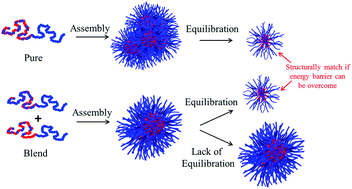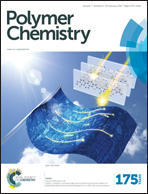Blending block copolymer micelles in solution; obstacles of blending†
Abstract
Amphiphilic block copolymers can assemble into a variety of structures on the nanoscale in selective solvent. The micelle blending protocol offers a simple unique route to reproducibly produce polymer nanostructures. Here we expand this blending protocol to a range of polymer micelle systems and self-assembly routes. We found by exploring a range of variables that the systems must be able to reach global equilibrium at some point for the blending protocol to be successful. Our results demonstrate the kinetic requirements, specifically core block glass transition temperature, Tg, and length of the block limiting the exchange rates, for the blending protocol which can then be applied to a wide range of polymer systems to access this simple protocol for polymer self-assembly.

- This article is part of the themed collection: Open access articles from Polymer Chemistry

 Please wait while we load your content...
Please wait while we load your content...